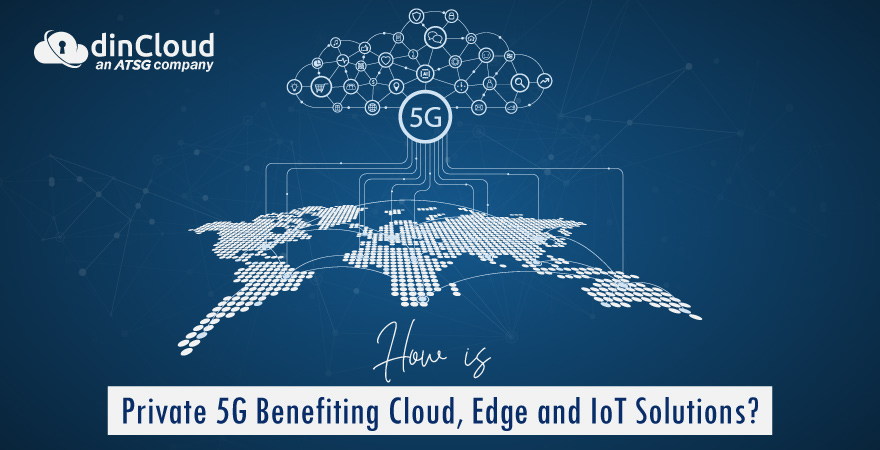We all know that the future is uncertain, yet full of possibilities. Even though no one can forecast the future with full precision, we can still confidently make one prediction for sure; the sooner businesses realize the importance of digital transformation, the better will it be for their survival, growth, and success.

Three technological trends that will particularly act as a catalyst in the digital transformation process are Cloud Computing, Edge, and the Internet of Things (IoT). These technologies are not only capable of transforming businesses, but also have the power to craft pathways that can transform entire industries.
Unfortunately, enterprises often tend to overlook a vital piece of the puzzle, which is connectivity. The existing legacy IT infrastructures, generally powered by incapacitated Wi-Fi, are not equipped well enough to provide the required security, control, and performance necessary to back computationally intensive workloads. Some examples of such processing and bandwidth-intensive processes include Machine Learning (ML), advanced analytics, and Artificial Intelligence (AI).
This is where the revolutionary Private 5G technology comes in, as a “lifesaver” for many businesses. Private 5G brings with it the perfect competitive edge that is required for genuinely transformational digital initiatives.
Reasons for Undergoing Digital Transformation
Today’s “new and improved” applications demand nothing less than optimal performance, top-notch security, and reduced latency, attributes that are typically lacking in most legacy IT infrastructures.
To understand this, let’s assume a scenario where a manufacturer wants to undertake a digital transformation initiative. Let’s consider that the end goal of that business is to automate some of its operations by leveraging autonomous vehicles and robotics technology. This entity is leveraging technologies like Machine Learning (ML) and real-time analytics, for the optimization of its factory operations. To control automated equipment, the organization will definitely require highly reliable connectivity, with no tolerance for issues such as latency.
In this case, legacy Wi-Fi can no longer be a viable solution, as it has an inconsistent bandwidth and recurring latency issues. Even if the manufacturer considers the expensive wireless carrier option, that also comes with its fair share of issues, such as lack of privacy and control.
In such circumstances, Private 5G can play a key part. It can deliver fast end-to-end connectivity, within various factories. This way, the confidential and sensitive data of that manufacturer’s enterprise will remain on-premise. It will also enable the seamless deployment of Cloud-native infrastructure in the near future.
In addition to that, it is important to know that private 5G highly complements the already thriving Cloud Computing technologies. Enterprises are all set to deploy 5G edge Cloud environments at scale. This is huge for enterprises and Cloud Service Providers (CSPs), as the recovering global economy and somewhat stable interest rates are fueling global investments in digital transformation processes.
Private 5G Evaluation
When businesses finally take the decision to up their “connectivity game”, now is the time to evaluate their 5G options. In the following points, we have highlighted the core criteria that must be considered by enterprises to reap the numerous expected benefits from flexible connectivity options.
- Private wireless should be such that the enterprise should have complete control over the maintenance, fine-tuning and iterative updates of its IT infrastructure. You should not settle for a slice of network, from a public network, that is routing your traffic via some operator’s core networks (outside your premises).
- Businesses usually seek to adopt genuinely transformative innovations, such as real-time analytics, automation, and digital twins, along with reduced latency rates. For such innovations, it is important that enterprises opt for highly secure and reliable 5G technology, instead of some other alternatives. Even though 5G-like alternatives do provide high-value and cost-effective solutions, they are only suitable for traditional applications.
- Enterprise’s legacy solutions are usually virtualized to run on edge computing platforms. With new edge services, connectivity should be developed for Cloud environments, not for legacy solutions. A cloud-native wireless network will have similar scalability and resilience, as your entire Cloud footprint. This way, wireless infrastructure should also be able to work like other Cloud-based software and enable seamless integration with developers that code various Cloud-based applications. This means that your IT environment is now part of a much wider and all-encompassing ecosystem, that can not only be scaled and modified, but can also seamlessly onboard the new edge, Cloud, and IoT solutions.
Conclusion
There is no doubt in the fact that technologies like Cloud Computing, the Internet of Things (IoT), and Edge can improve and expand your digital transformation endeavors to great extents. However, it is equally important that businesses take a hard look at their connectivity as well, and take corrective action.
Instead of watching your competitors get to “the top” before your enterprise, now is the right time to develop your digital transformation strategy on the shared spectrum of private 5G. Private 5G is much more than an “emerging trend” or a “buzzword”. When combined together, private 5G, along with robust Cloud Computing solutions can drive innovations to unprecedented levels.
Feel free to contact dinCloud, an ATSG company, which offers highly reliable, scalable, and agile Cloud Computing services and solutions. To top it all off, our solutions are offered as per a fully transparent and flat rate pricing model, enabling massive cost savings for your business.


